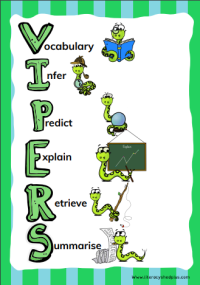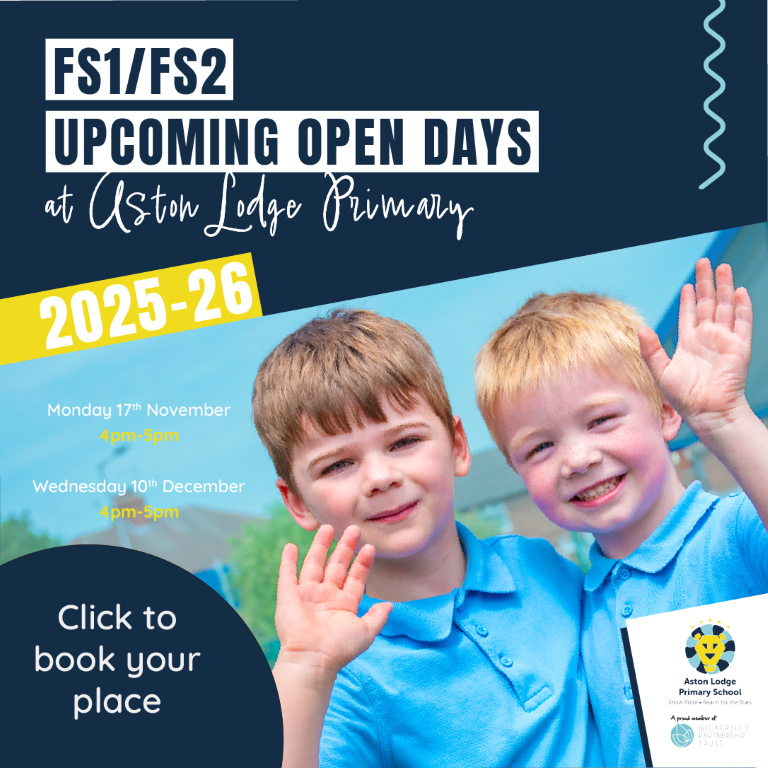early reading and phonics
SYSTEMATIC SYNTHETIC PHONICS
At Aston Lodge Primary, we use Read Write Inc Phonics (RWI) to give your child the best possible start with their reading and writing.
Phonics is a way of teaching children to read and write by blending and segmenting individual sounds. Every letter, and different combinations of letters, make particular sounds. For example, the letter ‘s’ makes a hissing sound, like a snake.
WHAT IS READ WRITE INC?
RWI was developed by Ruth Miskin and more information on this can be found here.
RWI is a phonics programme which helps children to learn to read fluently and at speed, so they can focus on developing their skills in comprehension, vocabulary and spelling. The programme is designed for children aged 4-7, however, at Aston Lodge Primary, we begin the programme in Foundation Stage 1 and continue teaching RWI beyond the age of 7 if they need further support in their reading.
HOW IS RWI TAUGHT AND ASSESSED
Phonics is taught in small groups of 10-12 children. During a phonics lesson, all children engage in a ‘Speed Sounds’ lesson which consists of children learning to recognise and form a new grapheme as well as being able to read and write words containing their new grapheme. This is followed by a ‘Reading Session’ which consists of the children reading a phonetically decodable reading book which is matched to their phonic ability they are working at. All children are assessed and reviewed twice per half term to ensure they are grouped accurately and are working with children at the same level, ensuring all children reach their full potential and access the programme successfully.
READING
The children:
- learn 44 sounds and the corresponding letters/letter groups using simple picture prompts
- learn to read words using Fred talk and sound blending
- learn to isolate different sounds in a word. We use a dot under letters where one letter makes one sound and a line under digraphs or trigraphs.
- read from a range of storybooks and non-fictions books matched to their phonic knowledge
- work well with partners
- develop comprehension skills in stories by answering ‘Find It’ and ‘Prove It’ discussion questions.
WRITING
The children:
- learn to write and form the letters/letter groups which represent the 44 sounds with the help of fun phrases
- learn to write words by using Fred Talk
- learn to build sentences by practising sentences out loud before they write
TALKING
The children work in pairs so they:
- answer every question
- practise every activity with their partner
- take turns in talking and reading to each other
- develop ambitious vocabulary
KEY TERMS AND PHRASES
- Phoneme – a single unit of sound
- Grapheme – How a sound is written using letters (e.g. ‘u’ in ‘book’ is written using ‘oo’)
- Digraph – two letters make one sound (e.g. sh, ch, ai, ea, ou, ow)
- Trigraph – three letters make one sound (e.g. igh, ear, air, ure)
- Split digraph – two letters make one sound but the letters have been split apart by another letter
- Segment – to break down the word into its individual sounds to spell (e.g cat can be split into the sounds c-a-t.)
- Blend – to put or merge the sounds together to make a word (e.g. the sounds d-o-g are blended to the word ‘dog’)
- Fred Talk – Teachers will introduce your child to a toy frog called Fred once he or she is ready to start reading words.
Fred can only say the sounds in a word and needs your child to help him read the word. Fred will say the sounds and children will work out the word. For example, Fred will say the sounds c–a–t, and children will say the word cat. This is Fred Talk: sounding out the word.
PHONICS IN NURSERY
In Nursery, children enjoy learning Nursery Rhymes and Voice Play songs. Rhymes sensitise a child to the individual units of sound that make up a word. The rhythms present in Nursery Rhymes help children to remember the words, exercising their auditory memory skills.
In Nursery, we follow the Twinkl Phase 1 Phonics SSP programme from the Autumn Term until the Spring Term. The purpose of Phase 1 is to develop children’s listening and communication skills. including their vocabulary, to prepare them for reading and writing in the next phase/level. If children do not fully develop these skills it can mean that they may struggle to hear the individual sounds in words which can mean children find it much harder to spell and blend sounds for reading.
During Level 1 children will develop their listening and communication skills through 7 aspects:
- Environmental sounds
- Instrumental sounds
- Body percussion
- Rhythm and rhyme
- Alliteration
- Voice sounds
- Oral blending and segmenting.
In the Summer Term, the children will begin the school’s Phonics scheme Read Write Inc, in-line with the rest of the school.
READING IN KS2
In KS2, pupils receive a home reading book which is linked directly to their reading ability. All pupils are assessed twice per half-term using the ‘York Assessment of Reading for Comprehension’ (YARC) to assess pupils reading behaviours, strengths and areas for development to ensure an appropriate level of challenge is provided, thus ensuring pupils continue to improve their reading skills, as well as fluency. Using the in-depth analysis from YARC, pupils are grouped into appropriate interventions where necessary.
Our lowest 20% of pupils, including those who did not pass the Phonics Screening Test, who have been identified as needing additional decoding intervention will be phonics assessed using Read Write Inc and grouped accordingly to ensure pupils receive a phonetically decodable reading book which is carefully matched to the phonic ability they are working at. Again, this is carefully monitored by staff and children’s progress is reviewed twice per half-term to ensure appropriate challenge and progression of reading, but also to ensure we are developing a love of reading.
All pupils who have been identified as needing additional reading intervention may be reviewed more frequently during the half-term due to accelerated progress during their 1:1 and group reading intervention. All staff working directly with the pupils will update their reading intervention file and assessment records that can be found in the child’s intervention folder on Google Drive.
Once pupils have progressed through each stage of our Read Write Inc Phonics scheme, they are assessed using YARC to identify their strengths, areas for development and reading age. Once the children have been assessed and given a current reading age, they will begin to choose their own reading books from the wide selection of books we have to offer either from our classroom reading corners or from our wider curriculum school library based on their reading age. These books vary in several ways, including layout, size, vocabulary, and length – this ensures pupils are provided with a rich diet of literature. In turn, this allows children to flourish in their reading and become confident, accurate and fluent readers, before moving on to more challenging texts of greater difficulty. Again, this is closely monitored by all staff working directly with the children during assessment periods and 1:1 reads. Our expectation is that a member of staff will listen to every child read their book once per week and will write a purposeful comment in the child’s reading record. Our lowest attaining children, including those identified as the lowest 20% will be read to at least twice per week with opportunities for additional reads through our reading club that is available during lunch times and before and after school.
PROMOTING A LOVE FOR READING
Reading Bookmarks
At Aston Lodge, each child from each year group is given a ‘Reading Bookmark’. On the reading bookmark is a list of key literature that has been identified for each year group. The children are encouraged to read each book that has been handpicked for their year group. When a child has completed all the books recommended, they are rewarded with a prize from the school’s Dojo Shop.
Reading Corners
Community Libraries, book areas and displays play an important part in building a reading culture at Aston Lodge. Each classroom is equipped with age appropriate books in their reading corner that children can choose to read for pleasure during playtimes, morning task and when they have finished their classroom learning. In EYFS and KS1, classrooms are equipped with story sacks alongside classroom stories. They include story spoons, story stones, teddy characters and face masks to encourage children with retelling of the story and story sequencing.
World Book Day
We love World Book Day at Aston Lodge! The annual celebration of authors, illustrators, books and reading is one of our favourite days of the year. Each year, children celebrate World Book Day in March. The children are encouraged to dress up in costumes of their favourite story characters. To begin the day, children are invited into school early to enjoy a reading breakfast – a breakfast provided morning of fruit, croissants, juice and breakfast bars whilst children engage in reading a book with their parents, teachers or peers. The children spend the day engrossed in fun activities based around stories and authors. To end the day, all children are invited to an assembly where prizes are awarded from each class for the best dressed character.
Reading Initiatives
At Aston Lodge, we celebrate reading and actively promote a love for reading. We incorporate opportunities to engage in reading enrichment activities such as:
- World Book Day
- Parent Workshops
- Bring a Book to Life Workshop
- Meet an Author Days
- EYFS and KS1 Library Visits
Reading at Home
Children who are accessing our Read Write Inc phonics programme in school will be designated an appropriately matched phonetically decodable book for your child to read in school and take home. In addition to a phonetically decodable book, the children accessing phonics also take home a reading for pleasure book for parents to share with children. These books are chosen weekly by children from our school or class library shelves. Children who no longer require a phonetically decodable phonics book will choose a reading book based on their reading age populated from the YARC assessments. We expect children to practise reading their book at home at least 3 times a week in order to build fluency and share success.
Reading VIPERS
Children are explicitly taught the skills of reading (outlined in the National Curriculum and the KS1 and KS2 test domains) through the use of VIPERS which were created by Rob Smith (The Literacy Shed).
The Reading Vipers can be used by both KS1 and KS2 with a little adaption. The main difference being in the S.
Sequence- KS1
Summarise-KS2
In KS1, ‘Explain’; is not one of the content domains, rather it asks children why they have come to a certain conclusion, to explain their preferences, thoughts and opinions about a text.
In KS2, the Explain section covers the additional content domains of 2F, 2G and 2H which are not present in KS1.
KS1 Content Domain Reference | VIPER |
1a draw on knowledge of vocabulary to understand texts | Vocabulary |
1b identify/ explain key aspects of fiction and non-fiction, such as characters, events, titles and information. | Retrieve |
1c identify and explain the sequences of events in texts | Sequence |
1d make inferences from the text | Infer |
1e predict what might happen on the basis of what has been read so far | Predict |
KS2 Content Domain Reference | VIPER |
2a Give/explain the meaning of words in context | Vocabulary |
2b retrieve and record information/ identify key details from fiction and non/fiction | Retrieve |
2c summarise main ideas from more than one paragraph | Summarise |
2d make inferences from the text/ explain and justify inferences with evidence from the text | Infer |
2e predict what might happen from details stated or implied | Predict |
2f identify/explain how information/ narrative content is related and contributes to meaning as a whole | Explain |
2g identify/explain how meaning is enhanced through choice of words and phrases | Explain |
2h make comparisons within a text | Explain |
Our Curriculum in Detail
Find out more
If you would like to find out more about our curriculum or have any queries please contact Mr S Holmes, Executive Headteacher, using our contact details.





